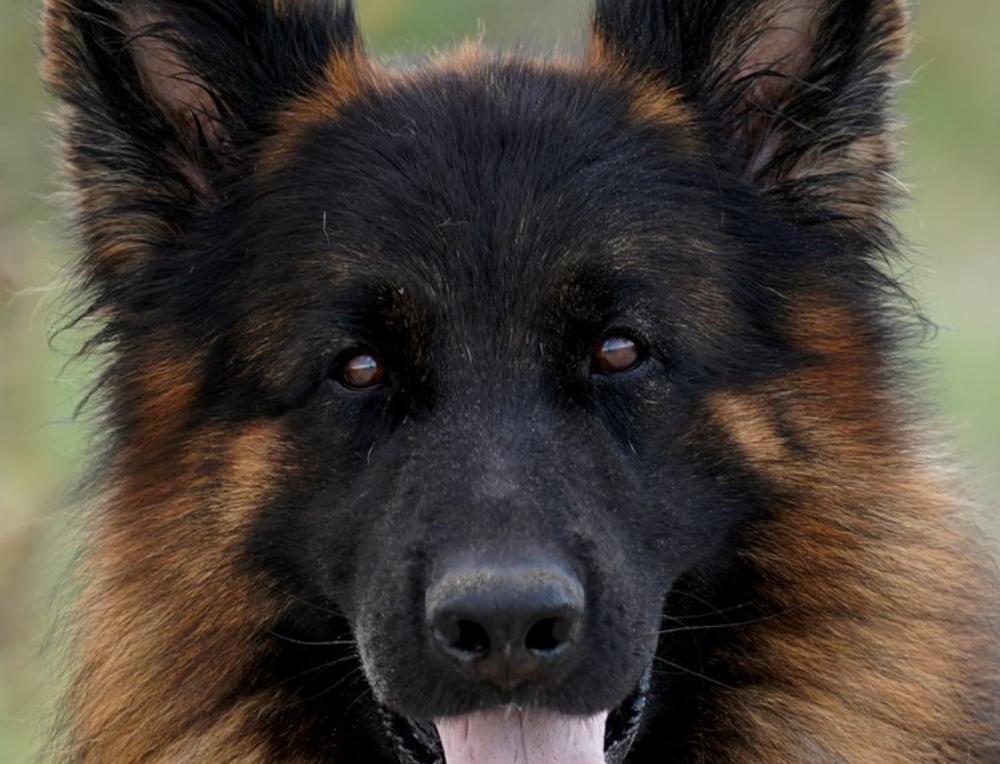German Shepherd Information
Admin
March 24, 2023

History of The German Shepherd
The German Shepherd, also known as the Alsatian, is a breed of dog that originated in Germany in the late 19th century. The breed was developed by a German cavalry officer named Captain Max von Stephanitz, who wanted to create a dog that was intelligent, versatile, and capable of working as a herding and guard dog.
Captain von Stephanitz began his work in 1899, when he attended a dog show and was impressed by a dog named Hektor Linksrhein. Hektor was a working dog that had all the characteristics that von Stephanitz was looking for in a breed: intelligence, loyalty, strength, and agility. He purchased the dog and began breeding him with other working dogs, with the goal of creating a new breed that would be the perfect working dog.
The breed that emerged from this breeding program was named the German Shepherd Dog. The breed was officially recognized by the German Kennel Club in 1901, and quickly became popular in Germany and other countries.
The breed was used extensively by the German military during World War I and World War II, where it served as a messenger dog, guard dog, and search and rescue dog. After the wars, the breed became popular in law enforcement and as a guide dog for the blind.
Today, the German Shepherd is one of the most popular dog breeds in the world. They are known for their intelligence, loyalty, and versatility, and are used as police dogs, search and rescue dogs, and as service dogs for people with disabilities. They are also popular as family pets and are known for their protective nature and their ability to form strong bonds with their owners.
German Shepherd Size
German Shepherds are a medium to large-sized breed of dog. The breed standard for the German Shepherd calls for males to stand between 24 and 26 inches (60 to 65 cm) tall at the shoulder, and for females to stand between 22 and 24 inches (55 to 60 cm) tall at the shoulder.
The breed standard also specifies that adult males should weigh between 65 and 90 pounds (30 to 40 kg), while adult females should weigh between 50 and 70 pounds (22 to 32 kg). However, it’s worth noting that there can be some variation in size depending on the individual dog and their genetics.
Overall, German Shepherds are a well-proportioned breed with a muscular and athletic build. They are known for their strength, endurance, and agility, which makes them well-suited for a variety of working roles, from police and military work to search and rescue and service dog work.
Are German Shepherds Good Family Dogs?
When German Shepherds are socialized around children from a young age, it is easy for them to develop a strong bond. Commonly GSDs are happy to play with young children, become their best friend and keep a watchful, protective eye over them. German Shepherds have a natural instinct to protect their pack and loved ones, and they are especially protective of young children.
In England, they are commonly referred to as the babysitter dogs, because parents feel safe having the dog watch over their children for a brief moment while they go the other room for something. German Shepherds are also protective of children when playing outdoors. You can rest assured that if a stranger approaches your child, your GSD will have something to say about it. The bond that develops between a German Shepherd dog and a child is inspiring and beautiful.
If you are thinking of adopting an older German Shepherd they too are capable of adapting and being good with children. Of course, this would depend on the individual dog and what type of life he or she has survived this far.
Do German Shepherds Shed?
Long-coated German Shepherds, like all dogs, shed their fur regularly as a natural process of growth and renewal. However, the length of their coat can impact how much they shed and how noticeable it is.
Long-coated German Shepherds have a thicker, longer coat than their short-coated counterparts, which means they can shed more hair overall. However, the longer hair can also make shedding less noticeable, as the hair is more likely to get caught in the coat and not fall out onto floors or furniture.
To manage shedding in long-coated German Shepherds, regular grooming is essential. This can include brushing the coat regularly to remove loose fur and prevent matting, as well as bathing the dog as needed to keep the coat clean and healthy. Regular grooming can also help distribute the natural oils in the coat and promote healthy skin and fur growth.
It’s also worth noting that German Shepherds, regardless of coat type, shed more heavily during certain times of the year, typically during the spring and fall. During these times, more frequent grooming and brushing may be necessary to keep shedding under control.
Impact of Neutering on German Shepherds
Neutering, which is the surgical removal of the testicles in male dogs, and spaying, which is the surgical removal of the ovaries and uterus in female dogs, can have several effects on German Shepherds, both positive and negative.
One of the main positive effects of neutering male German Shepherds is a reduced risk of certain health issues, such as testicular cancer and prostate problems. Neutering can also reduce undesirable behaviors in male dogs, such as aggression, roaming, and marking.
In female German Shepherds, spaying can also reduce the risk of certain health issues, such as mammary tumors and uterine infections. It can also prevent unwanted litters of puppies and reduce undesirable behaviors associated with the reproductive cycle, such as roaming and vocalization.
However, there are also potential negative effects of neutering and spaying. Neutering male German Shepherds can increase the risk of certain health issues, such as obesity, joint problems, and urinary incontinence. Spaying female German Shepherds can also increase the risk of obesity and joint problems.
In addition, neutering and spaying can affect the dog’s behavior and temperament. Some dogs may become more sedentary and less active after being neutered or spayed, while others may become more anxious or aggressive. However, the effects of neutering and spaying on behavior can vary widely between individual dogs.
Overall, the decision to neuter or spay a German Shepherd should be made on a case-by-case basis, taking into account the dog’s health, behavior, and lifestyle. It’s important to discuss the potential risks and benefits of the procedure with a veterinarian before making a decision.
German Shepherd Exercise Requirements
German Shepherds are a highly active and intelligent breed that require daily exercise to maintain their physical and mental health. Here are some general exercise requirements for German Shepherds:
Daily walks: German Shepherds should be taken for a walk or run for at least 30-60 minutes every day to help burn off excess energy and keep them physically fit.
Interactive playtime: German Shepherds are highly intelligent and benefit from interactive playtime with their owners. This can include games of fetch, tug-of-war, or hide-and-seek.
Training sessions: Training sessions can provide both physical and mental stimulation for German Shepherds. Training can include obedience training, agility training, or even scent work.
Outdoor activities: German Shepherds enjoy outdoor activities such as hiking, swimming, and playing at the park. These activities can provide an opportunity for your German Shepherd to burn off excess energy and enjoy the outdoors.
It is important to note that the exercise requirements for each German Shepherd can vary based on their age, health, and individual personality. Consult with a veterinarian or a professional dog trainer to create an exercise plan that is best suited for your German Shepherd.
Training a German Shepherd
Training a German Shepherd requires patience, consistency, and positive reinforcement. Here are some tips for training a German Shepherd:
Start with basic obedience training: Begin with basic commands such as “sit,” “stay,” “come,” and “heel.” These commands can form the foundation of your German Shepherd’s training.
Use positive reinforcement: Positive reinforcement, such as treats, praise, and playtime, is an effective way to motivate and reward your German Shepherd for good behavior.
Be consistent: Consistency is key in training a German Shepherd. Use the same commands and techniques each time, and avoid confusing your dog with mixed signals.
Socialize your German Shepherd: German Shepherds can be wary of strangers and other animals, so it is important to socialize your dog from a young age. Introduce your German Shepherd to new people, animals, and environments in a controlled and positive way.
Provide mental and physical stimulation: German Shepherds are intelligent dogs that require mental and physical stimulation to stay happy and healthy. Consider training your German Shepherd in agility or scent work, and provide puzzle toys and other interactive games to keep your dog engaged.
Seek professional help if necessary: If you are having difficulty training your German Shepherd, consider seeking the help of a professional dog trainer who specializes in German Shepherds.
Remember that training a German Shepherd takes time and effort, but the rewards are well worth it. With patience and consistency, you can develop a strong bond with your German Shepherd and create a well-behaved and happy companion.
Adopt a Dog
Dogs come into our lives to teach us about love; they depart to teach us about loss. A new dog never replaces an old dog. It merely expands the heart.







